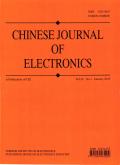A Novel Subspace-Based GMM Clustering Ensemble Algorithm for High-Dimensional Data
IF 3
4区 计算机科学
Q3 ENGINEERING, ELECTRICAL & ELECTRONIC
引用次数: 0
Abstract
The Gaussian mixture model (GMM) is a classical probabilistic representation model widely used in unsupervised learning. GMM performs poorly on high-dimensional data (HDD) due to the requirement of estimating a large number of parameters with relatively few observations. To address this, the paper proposes a novel subspace-based GMM clustering ensemble (SubGMM-CE) algorithm tailored for HDD. The proposed SubGMM-CE algorithm comprises three key components. A series of low-dimensional subspaces are dynamically determined, considering the optimal number of GMM components. The GMM-based clustering algorithm is applied to each subspace to obtain a series of heterogeneous GMM models. These GMM base clustering results are merged using the newly-designed relabeling strategy based on the average shared affiliation probability, generating the final clustering result for high-dimensional unlabeled data. An exhaustive experimental evaluation validates the feasibility, rationality, effectiveness, and robustness to noise of the SubGMM-CE algorithm. Results show that SubGMM-CE achieves higher stability and more accurate clustering results, outperforming nine state-of-the-art clustering algorithms in normalized mutual information, clustering accuracy, and adjusted rand index scores. This demonstrates the viability of the SubGMM-CE algorithm in addressing HDD clustering challenges.一种新的基于子空间的高维数据GMM聚类集成算法
高斯混合模型(GMM)是一种经典的概率表示模型,广泛应用于无监督学习。由于GMM需要用相对较少的观测值估计大量的参数,因此在高维数据(HDD)上表现不佳。为了解决这一问题,本文提出了一种针对HDD的基于子空间的GMM聚类集成(SubGMM-CE)算法。提出的SubGMM-CE算法包括三个关键部分。考虑GMM分量的最优数量,动态确定一系列低维子空间。将基于GMM的聚类算法应用于每个子空间,得到一系列异构GMM模型。使用新设计的基于平均共享隶属概率的重标记策略合并这些GMM基聚类结果,生成高维未标记数据的最终聚类结果。详尽的实验评估验证了SubGMM-CE算法的可行性、合理性、有效性和对噪声的鲁棒性。结果表明,SubGMM-CE在归一化互信息、聚类精度和调整后的rand指标得分方面优于9种最先进的聚类算法,实现了更高的稳定性和更准确的聚类结果。这证明了SubGMM-CE算法在解决HDD集群挑战方面的可行性。
本文章由计算机程序翻译,如有差异,请以英文原文为准。
求助全文
约1分钟内获得全文
求助全文
来源期刊

Chinese Journal of Electronics
工程技术-工程:电子与电气
CiteScore
3.70
自引率
16.70%
发文量
342
审稿时长
12.0 months
期刊介绍:
CJE focuses on the emerging fields of electronics, publishing innovative and transformative research papers. Most of the papers published in CJE are from universities and research institutes, presenting their innovative research results. Both theoretical and practical contributions are encouraged, and original research papers reporting novel solutions to the hot topics in electronics are strongly recommended.
 求助内容:
求助内容: 应助结果提醒方式:
应助结果提醒方式:


